Panther chameleons are colorful reptiles native to Madagascar. These reptiles are popular exotic pets because they are one of the most colorful chameleon species. They are usually relatively docile, but handling daily can cause undue stress. In the wild, however, they are known for their loud, colorful displays of aggression when threatened. Read on to learn about the panther chameleon.
Description of the Panther Chameleon
These lizards can be quite long, and it is not uncommon for specimens to reach 20 in. in length. This species is sexually dimorphic, which allows you to easily distinguish between males and females. Females are approximately half the size of males, and duller in coloration.
The regional location of the individual will dictate its coloration, which ranges from bright blue, orange, red, and green. Within their base coloration they have a wide variety of spotting, striping, and patterns that they display.
Interesting Facts About the Panther Chameleon
These incredibly colorful creatures intrigue the humans they interact with. Like all chameleons, they have a number of amazing adaptations that set them apart from other reptiles.
- Tong Toes – Chameleons have uniquely formed feet that help them grip the branches they climb on. Their toes are fused together, with two toes on the outside of the foot, and three toes on the inside of the foot. This gives them a unique appearance, which looks incredibly similar to a pair of tongs!
- Tall Tails – Another great way to keep yourself from falling out of your tree is to have an extra “hand” to hold yourself up. In addition to their four pairs of tong-like feet, this species of lizard has a prehensile tail. That means that they can use their tail to curl around and grip branches.
- Creative Coloration – Instead of using their impressive color-changing abilities to match the trees, these chameleons use their ability to change color for something else entirely. Males use their bright colors to dazzle and intimidate rival males.
- Translations – Other colors also show different moods or emotions. When the animals are green, they are calm and relaxed. Yellow and red indicate aggression, while blue indicates an attempt to impress. Lighter colors signal a willingness to mate, and brown or black signals an unwillingness to mate.
Habitat of the Panther Chameleon
This species is native to a very restricted region of Madagascar, and lives only in a small range of habitats. They must have vegetation to survive, as they are arboreal, which means that they live in the trees rather than on the ground.
Their natural habitat is coastal rainforests within the northern regions of Madagascar. In captivity, replicating the conditions that they experience in the wild will ensure a healthy pet.
Distribution of the Panther Chameleon
These chameleons have a very restricted habitat ranges. They are endemic only to the island of Madagascar, and within the island they are located only along the northern coasts — Specifically at the northern tip of Madagascar, and along the northeast coast. Outside of Madagascar look for them in households worldwide as pets, and as invasive species in Reunion and Mauritius.
Diet of the Panther Chameleon
Panther chameleons are insectivores, which means that their diet consists primarily of insects. They have incredibly precise vision, and use that vision to spot small insects from distances as far as 30 ft. away. these creatures use their incredibly long tongues like slingshots. The tongue features a suction cup and a layer of mucous on the tip, which effectively captures insects and brings them back to the lizard’s mouth.
Panther Chameleon and Human Interaction
These reptiles are common exotic pets, particularly beloved for their bright colors. This species reproduces easily in human care, and this helps protect the wild populations. This means there is no need to capture them from the wild for the pet trade, ensuring the wild chameleons have a stable population. According to the IUCN Red List, this species is at Least Concern.
Domestication
This species reproduces easily in captivity, but they have not been domesticated in any way. Selective breeding has not occurred on a large enough scale to achieve domestication.
Does the Panther Chameleon Make a Good Pet
These chameleons make good pets when properly cared for. They are usually docile, but over-handling can stress them. It is important to supervise children when handling any potentially fragile creature.
Panther Chameleon Care
The most important aspect of keeping these chameleons is providing vertical space in their enclosure. They are arboreal, and require lots of climbing space. Providing a wide variety of branches, vines, and foliage is important.
They require maintenance of temperature, light, and humidity based on the direction of your breeder or veterinarian. Use variation in their feeding, as and they can eat a number of different insects. Some commonly fed items include crickets, silkworms, superworms, roaches, hornworms, and stickbugs.
Behavior of the Panther Chameleon
Panther chameleons are diurnal, which means that they are most active during the day. They spend their days foraging in the trees, searching for insects. They are arboreal, which means that they live in the trees, rather than on the ground. Males are particularly territorial, and will patrol and protect their territories from other males. The largest males have the most productive territories, with a wide variety of food sources.
Reproduction of the Panther Chameleon
These chameleons can reproduce when they reach seven months of age. Females who are carrying eggs will signal their unwillingness to mate by turning a dark color, commonly with orange stripes. She will lay anywhere from five to eight clutches of eggs, but usually does not survive longer than two years after reproducing. She can lay several dozen eggs in a single clutch, and it can take over seven months for those eggs to hatch.

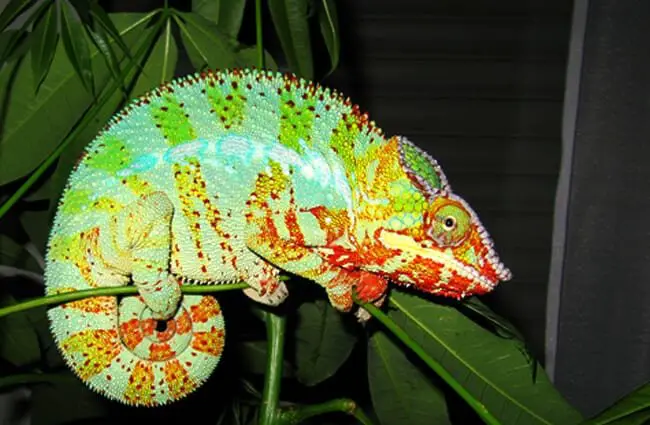
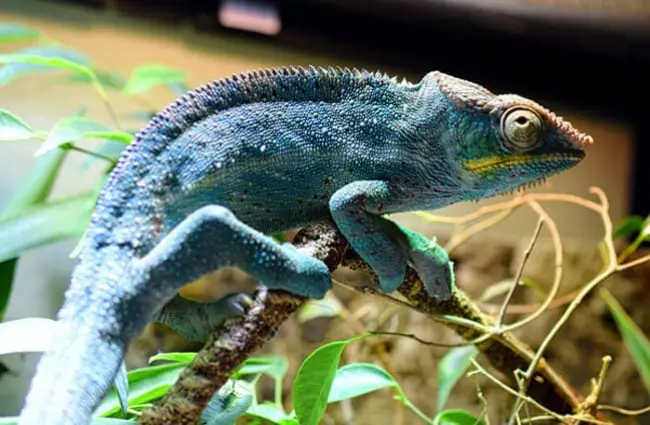

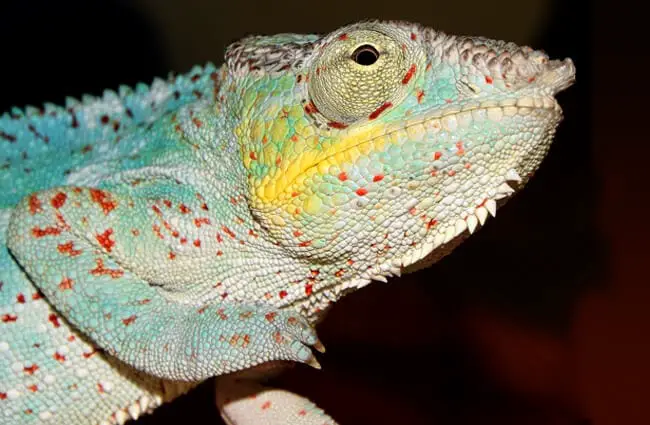
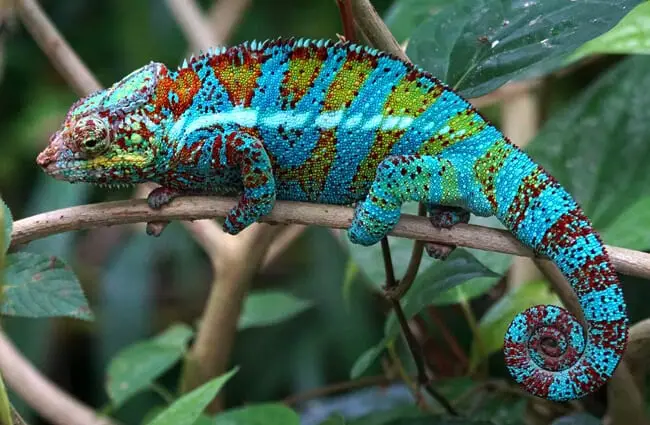
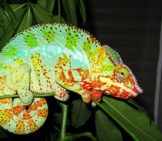

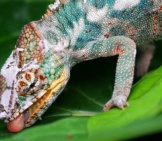
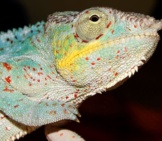

![Red Angus Closeup of a beautiful Red Angus cowPhoto by: U.S. Department of Agriculture [pubic domain]https://creativecommons.org/licenses/by/2.0/](https://animals.net/wp-content/uploads/2020/03/Red-Angus-4-238x178.jpg)




![Red Angus Closeup of a beautiful Red Angus cowPhoto by: U.S. Department of Agriculture [pubic domain]https://creativecommons.org/licenses/by/2.0/](https://animals.net/wp-content/uploads/2020/03/Red-Angus-4-100x75.jpg)

